For a car that is generally unappreciated, there sure seem to be a whole lot of very appreciated 924s that come up for sale – in fact, I think I’m right in saying that I see far more good condition 924s than early 944s. In some ways, that makes sense – I think the people that bought them really aspired to buy a nice car on a budget and held onto them for a long time, generally caring for and maintaining their pride and joy. After all, it doesn’t matter if someone else doesn’t think your car is special; it really only matters if you think it’s special. That sums up the 924, and especially the 924S well. Coming from Audi Coupe ownership, I can really appreciate that sentiment; most people brush off the Coupe automatically because it’s not a turbo or quattro, leaving the people that own them to truly appreciate an affordable and fun car to drive.
Today we have another stellar condition 924S that has popped up; this one in classic Guards Red with Porsche Script seats:
Year: 1987
Model: 924S
Engine: 2.5 liter inline-4
Transmission: 5-speed manual
Mileage: 62,500 mi
Price: $8,999 Buy It Now
CLICK FOR DETAILS: 1987 Porsche 924S on eBay
Contact Mark Counts at Bavarian Motors
at 713-320-3059
Spring, TX 77388
View This Seller’s Other Auctions
1987 Porsche 924S – The Perfect Porsche!
Red Exterior / Black Interior VIN: WP0AA0928HN451102
2 Doors, Rear Wheel Drive, Coupe, 4 Cylinders, Manual Inventory ID: 451102
Vehicle DescriptionIn the mid 1970’s it had become clear to virtually everyone in the car business that Porsche’s entry level car – the 914 – needed replacing. The car was based on technology dating back to the 1930’s (albeit with major engine and transmission improvements). Unfortunately, Porsche did not have a clear successor to the car as it had focused most of its in-house design work on the purported replacement for the 911 – the 928.
However, Porsche designers had been working on the design of a small sports car for VW – the Type 477 (or the EA435). This car was intended to be built using existing VW-Audi parts and as VW’s bargain entrant into the sports car market. As the 1970’s progressed and the fuel crisis spread, VW made the decision to cancel its support for the Type 477. Porsche, in need of a design for a 914 replacement, bought the rights to the Type 477, named it the 924 and almost immediately began production of it in a VW factory in Neckasulm, Germany.
The car was, essentially, a VW-Audi in a Porsche skin. As originally intended, the car was comprised almost entirely of off the shelf VW components. The engine was one of the original car’s major downfalls. It was a water cooled VW 2.0 litre used in VW vans and Audi 100’s. It was loud, noisy, and produced a meager 95 hp. The front wheels had disc brakes while the rear had drums. The car had three redeeming qualities:
1. The body shell was quite attractive;
2.The transmission was located in the rear of the car giving it perfect 50/50 weight distribution; and
3. It was dirt cheap for consumer – about $9,395.
It was also very profitable for Porsche. These qualities helped it survive its initial incarnation.
As with the 914, the VW sourced engine was problematic for Porschephiles. However, in contrast to the quite advanced Type IV in the 914, the Audi powerplant in the original 924 was an unrefined and discordant contraption. It was simply not the right engine for the car and the Porsche nameplate could do nothing to hide this fact. With the exception of turbocharged variants, the problem with this engine continued until 1987 when Porsche made the decision to place a 944 engine into a 924.
In contrast to the 924’s use of a VW-Audi engine, Porsche designed and built an engine in-house for the 944. This engine was derived from the V-8 the company had installed in its then flagship car – the 928. In order to develop a smaller engine for the 944, Porsche essentially took a 928 engine and cut it in half. This gave Porsche the right number of cylinders – 4 – and the right displacement – 2.5 litres – for its mid-line car. Porsche then “borrowed†technology from Mitsubishi to compensate for the new engine’s “slant 4†design. This technology – a harmonic balancer – compensated for the pistons slant toward the passenger side of the car. Thus, Porsche produced a small 4 cylinder engine with roughly 150 horsepower. This engine was capable of propelling the 944 from 0-60 in 8.3 seconds.
Owing to lagging sales of the 944, Porsche made the wise decision to install a 944 engine, powertrain and suspension in a 924 body. Further, Porsche made the decision to market the car at lower cost – $19,990 USD. Thus, the 1987 Porsche 924S was born. This car was, in almost every mechanical respect, a Porsche 944 in a 1924’s body. It had the same engine, the same transmission and the same suspension. As the 924 had a lower coefficient of drag (.33 vs. .35) and weighed less (about 50 pounds lighter), it was also slightly faster off the line than a 944. Further, given its initial price, it had a distinct sales advantage over its bigger brother.
When it debuted, the 1987 924S was embraced by both Porscheophiles and the automotive community. In example, the July 1986 issue of Motor Trend stated:
“If I were standing in the doorway of the local Porsche dealership with $25,000 in my pocket and an unquenchable need for a front-engined Porsche with four pistons, I think I’d save $5,000 and buy the 924S. Two thousand bucks would get me a killer set of tires and wheels, which would be the only real difference. … While you are in it, it’s all too easy to forget you’re in a 924. The performance, braking and acceleration are truly counterfeit 944.â€
Motor Trend, July 1986, page 33. Incidentally, this car will be sold with this issue of Motor Trend.
Today, the 1987-88 Porsche 924S remains a much sought after car. Its combination of good looks, competent performance and affordable price make it desirable to both collectors and weekend racers.
The particular car presented here is a superb example of the road that Porsche stopped traveling down. The car was sourced from Arizona and its red paint presents nicely. The paint is believed to be original to the car. While the hood has a few rock chips and some swirl marks, it remains in acceptable condition.. The car has no sign of body damage and it is believed to be accident free. The tires on the car are less than one year old and have virtually no wear on them. The phone dial rims are highly presentable and show signs of being recently repainted. The rubber portions of the car are in superior condition and do not need replacing. The drain holes on the rear of the spoiler are not clogged and drain water easily. There is no sign of water penetration into any of the interior spaces and the rear deck lid does not leak.
The interior of the car is in absolutely stunning condition. The gauges all work (including the clock). The seats show no obvious signs of wear and the side bolsters are not cracked or worn. The rear seats appear to have never been sat in, the carpet presents nicely and an aftermarket set of floor mats graces them. The car is sold with two dash covers – one carpet and one plastic. Neither has been permanently attached to the car and they are completely removable. The original dash has some limited cracking but the dash covers remedy this perceived problem nicely. Personally, I prefer the car without the dash covers but you can fit the car to suit your taste.
The car’s stereo system is of modern extraction and gently bathes the cabin with clean and crisp sound. The sunroof is completely operational and the car has a storage bag for protection of the removable roof. The car is equipped with its original tool set, air compressor and floor jack. The car has its original owner’s manual and attendant records which show that over $5,000 has been spent on this car in the last 2 years. These records show that in August 2012, the prior owner had Stuggart Southwest in Tempe, Arizona perform the following maintenance items:
Clutch, throw out bearing and fork bearings replaced;
Flywheel seal replaced;
Water pump replaced;
Cooling system flushed and refilled;
Fuel pump replaced;
Sunroof gears replaced and retimed;
Rear shocks replaced;
Oil change; spark plugs replaced;
Front motor mounts replaced;
Front deck lid strut replaced;
Fuel tank resealed; and
Drive shaft and bell housing repaired.
These repairs alone totaled $4,732.19. In addition, on October of 2012, new Yokohama 205/60R15 tires were placed on the car and in May of this year the car’s AC system was serviced with new clamps and compressor o-rings. As an aside, the car’s A/C system works spectacularly and is far, far better than I expected (it is very, very cold!!).
Given the wonderful condition of this car, its design strength and its documented record of proper maintenance, I feel that it can be enjoyed today and, over time, will greatly appreciate.
If you are interested in acquiring this classic example of a 1987 Porsche 924S then please contact Mark Counts @ 713-320-3059.
The condition of this car is truly impressive, especially coming from sunbathed states like Arizona and Texas. The original brown dash appears uncracked, the air conditioning works – there are virtually no signs of major wear on this 26 year old car. The seller notes the $4,000 plus on recent maintenance, a real bonus for these older cars – notably, the clutch replacement. Personally, I think this car is just about perfect, though I’d likely try to source some of the wider “Special Edition” alloys as I think they suit the design better, and longterm you could look at replacing the U.S. spec bumpers with much cleaner European units. The asking price may seem far out of line for a 924S, but considering the general level of fit and finish on the car coupled with the recent expensive maintenance, I’m not sure that it is. Obviously, it’s a highly specialized market, but a clean and well maintained 924S is probably worth most of the asking price. You could pick up a higher mile model and try to restore it but you’d be nowhere close to this price at the end; save yourself some serious headaches and enjoy this special car, even if no one else thinks it is special!
-Carter
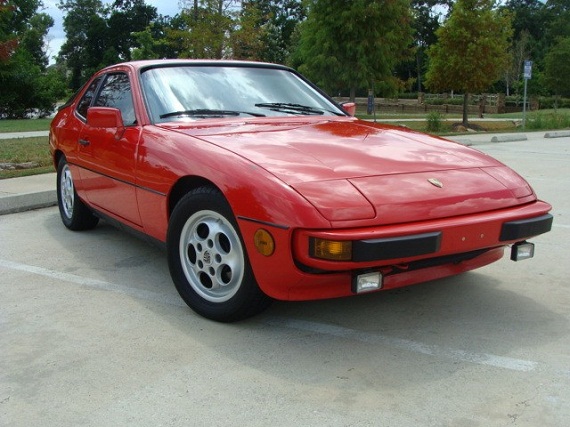

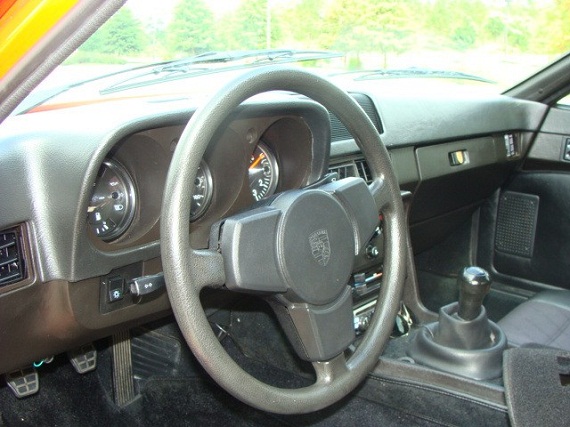

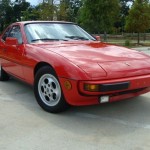

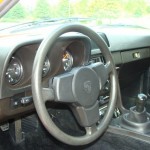


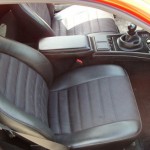
That’s a plastic cap covering the original dash I believe.
Dan, the seller shows a carpet cover, but underneath it appears that the original dash is uncracked (at least, from what I can see!)
Not sure how this car would feel driving it today, but when they were new, my parents had a matching 944 and a 924S in the garage. I drove them more than they did, so I got to experience the good and bad of both cars.
Although the 944 got a lot more attention (in the 80’s), the 924S was clearly a much better car. Besides the ‘new’ outdated dashboard and the plastic rimmed steering wheel, the car was much more agile, faster, and lighter than the 944. I could whip it around corners and accelerate in no time (I know, I was in High School), while the 944 felt heavy a wide.
If I was to buy one of these today, I would probably not end up buying the 924S due to the easy cracking of the dashboard. I remember in AZ they would last 2 years.
Audemars,
I, too, grew up with both 924S and 944 (though, Turbo S) in the garage. The situation is obviously slightly different, but I think overall your observations are pretty accurate in my experience. I know it’s probably not what you’re into, but if you really can’t stand the dash you could always do a later 944 dash swap into the 924S. A lot of work, and probably just easier to buy a 944 at that point, but I have to say that between the 924S and the NA 944, I think I actually prefer the narrow-body 924 design slightly more. Crazy talk!
Carter I’m pretty sure that is a plastic cap. You can see in the pictures that the center speaker grill is recessed, not flush, and you can see the lines of the cap around the left dash heater vent.
So he has the carpet cover, over the plastic cap, over the original dash.
Carter –
I think we are having a lot in common, but yes, the 944 Turbo was a whole different world after the legular 944.
I got the 944 as a graduation present, totalled it a couple of years later (not my fault), and bought a 944 Turbo right after. Drove someone else’s regular 944 later, which was a disappointment. The 924S was not as bad, after getting used to the 944 Turbo.
Dan, I see it now too, good catch. Looks like a fairly high quality replacement.
had the same car some 20 years ago… only exception, it was automatic so my wife could drive it… which she never did… same model, color, upholstery, wheels, equipment (even the air compressor accessory!).. sold it in late ’93 with only 46k original miles — no mods, no flaws — for what was then a fair price: $6850… wasn’t a practical enough family car… now empty nesters, i’d go for another one — like this one — in a minute if I could find one closer to home in the SF bay area (won’t buy any car i can’t personally inspect)… and this time i’d go for the stick shift…